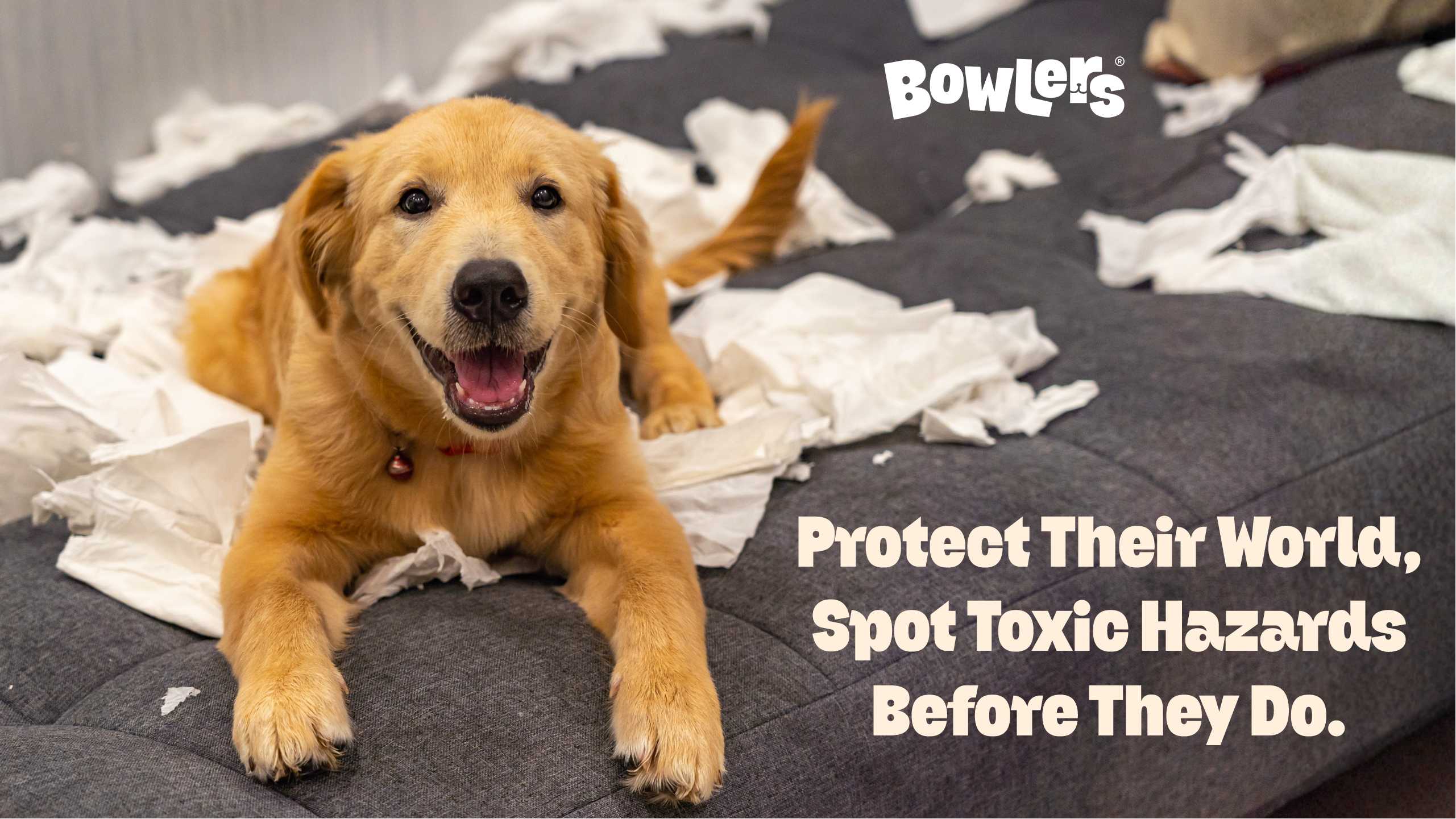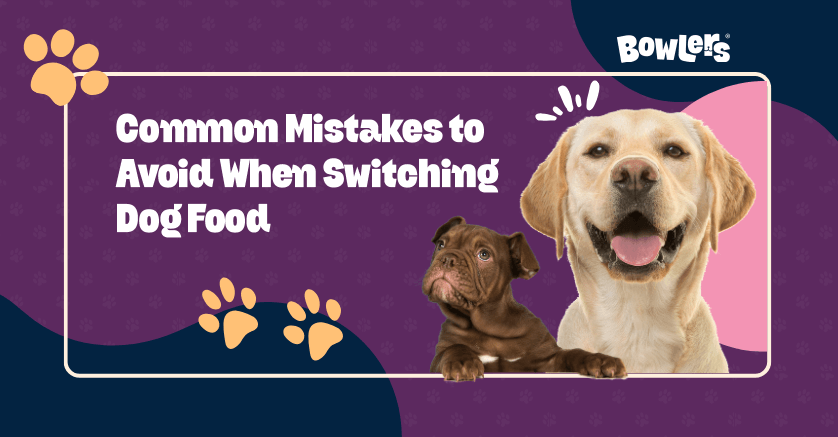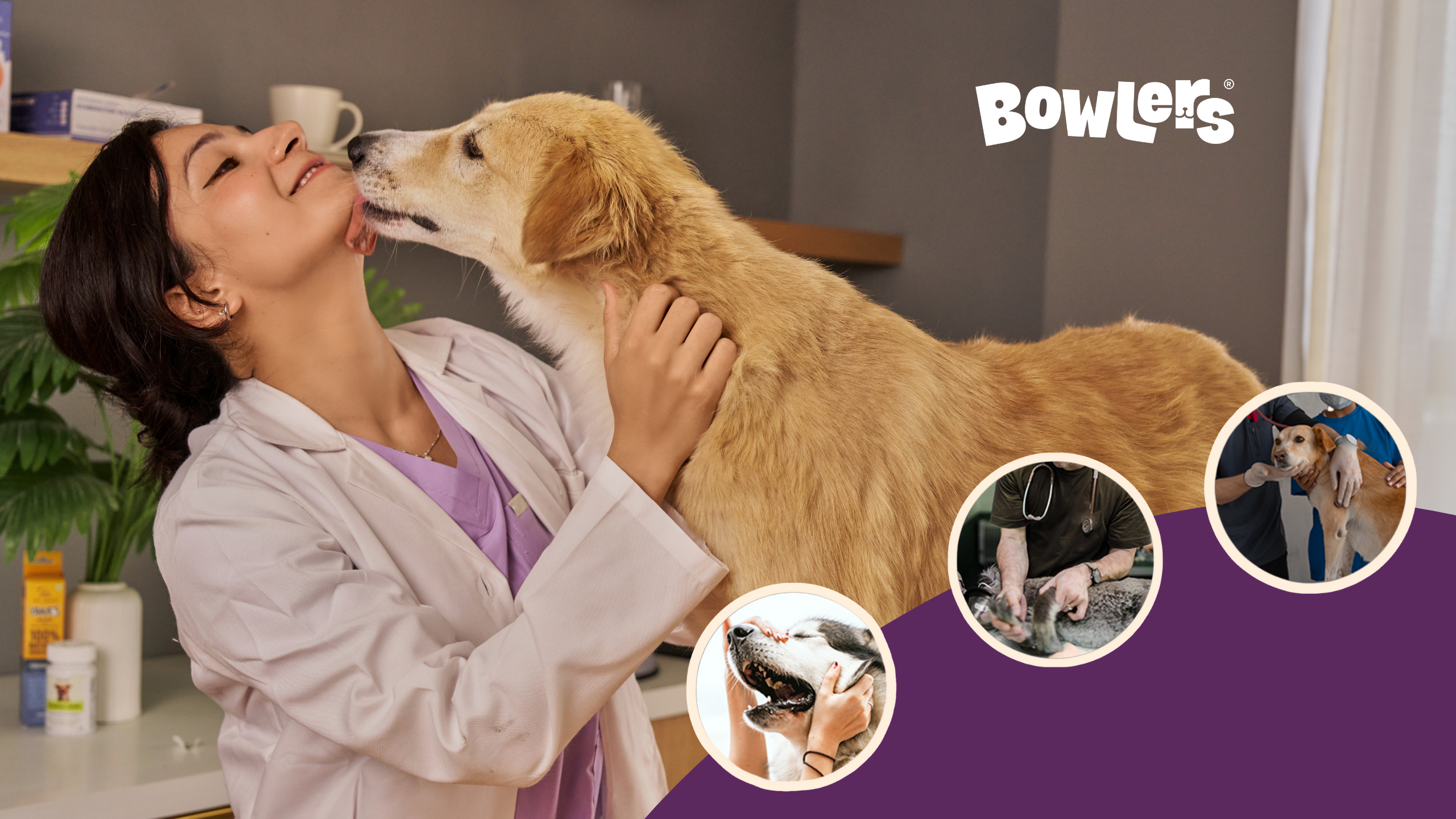Common Household Items That Are Toxic to Dogs

Table of contents
- Why It’s Important to Identify Toxic Household Items
- Human Foods That Are Toxic to Dogs
- Toxic Household Plants
- Cleaning Supplies and Chemicals
- Personal Care and Beauty Products
- Garage and Outdoor Hazards
- Recognizing Signs of Poisoning in Dogs
- Creating a Pet-Safe Home Environment
- Final Thoughts on Creating a Safe & Happy Home for Your Dog
- FAQs on Toxic Household Items for Dogs
Your home is your dog’s playground, filled with smells, textures, and endless curiosity. But while your furry friend explores every corner, some everyday items could pose serious risks to their health.
Many pet parents assume their homes are safe, yet countless products from food and plants to cleaning agents can be harmful to dogs. The key to maintaining dog home safety lies in knowing which items to keep out of reach and how to respond if your pet comes into contact with them.
Creating a pet-safe home begins with awareness. Just as choosing a balanced, vet-approved diet keeps your pet healthy from the inside, identifying and removing hidden household dangers keeps them safe from the outside.
Why It’s Important to Identify Toxic Household Items
Dogs explore the world through their noses and mouths. Their curiosity often leads them to lick, chew, or swallow things that may seem harmless but can cause anything from mild stomach upset to life-threatening poisoning.
By recognizing toxic household items early, you can dog-proof your home and prevent emergencies before they happen. Combine these precautions with a wholesome diet from Bowlers Dog Food, and you’ll be nurturing your pet’s overall wellness inside and out.
👉 Related read: [Home Safety Tips to Keep Your Dog Safe Indoors and Outdoors]
Human Foods That Are Toxic to Dogs
Sharing food is a bonding moment for many pet owners, but not all human treats are safe. Some ingredients that are perfectly fine for us can be dangerous or even deadly for dogs.
Toxic Foods to Avoid
- Chocolate: Contains theobromine, which can trigger vomiting, tremors, or seizures.
- Grapes and Raisins: May cause kidney failure even in small quantities.
- Onions and Garlic: Damage red blood cells, leading to anemia.
- Avocado: Contains persin, which can cause digestive distress.
- Caffeine and Alcohol: Affect the nervous system and can be fatal.
- Xylitol (Artificial Sweetener): Found in sugar-free gum or peanut butter, can cause a rapid drop in blood sugar and liver failure.
Even small amounts can be harmful. Keep food stored on high shelves and remind guests not to share table scraps.
👉 Explore next: [How to Dog-Proof Your Home Room by Room] for more practical kitchen safety ideas.
Toxic Household Plants
Houseplants add freshness and life to a home, but some can be harmful to curious pets. While a few may only irritate the mouth or skin, others can cause serious internal issues.
Common Toxic Plants
🌸 Lilies – Highly toxic to dogs; even small bites can lead to kidney failure.
🌿 Aloe Vera – Can cause vomiting, lethargy, and digestive upset when ingested.
🌱 Ivy (English Ivy) – May trigger drooling, diarrhea, and abdominal pain.
💧 Pothos (Money Plant) – Irritates the mouth, lips, and throat, leading to discomfort.
🌴 Sago Palm – One of the deadliest plants for dogs; even a few seeds can be fatal.
If you love greenery, opt for dog-safe plants such as spider plants, bamboo palms, or marigolds instead.
Cleaning Supplies and Chemicals
A sparkling home can sometimes come at a cost if cleaning products aren’t pet-friendly. Dogs can easily inhale fumes or lick surfaces after cleaning, leading to chemical exposure.
Harmful Cleaning Products
- Bleach and Ammonia: Can cause burns or respiratory irritation.
- Floor Cleaners: Residue on paws may be ingested later during grooming.
- Toilet Bowl Cleaners: Extremely toxic if your dog drinks from the bowl.
- Laundry Detergents and Pods: Often resemble toys but contain concentrated toxins.
Store cleaning agents in high cabinets or behind child-locked doors. Whenever possible, use natural, pet-safe cleaning products made from ingredients like vinegar or baking soda.
👉 See also: [Electrical Cord and Appliance Safety for Dogs] for more home accident prevention tips.
Personal Care and Beauty Products
Personal hygiene and beauty products might seem harmless to you but can be dangerous for pets. Dogs often access them from open bags, bathroom counters, or bedside tables.
Items to Keep Away from Dogs
- Painkillers (Ibuprofen, Paracetamol): Even small doses can be deadly.
- Perfumes and Deodorants: Contain alcohol and chemicals that irritate the respiratory system.
- Hair Dyes and Nail Polish Removers: Contain acetone and other toxic compounds.
- Essential Oils: Tea tree, citrus, eucalyptus, and peppermint oils are harmful if inhaled or absorbed through the skin.
Keep these items securely stored in drawers or closed cabinets, especially in bathrooms where your pet may wander.
👉 Related topic: [Preventing Accidents with Stairs and Balconies for Dogs] for more indoor safety tips.
Garage and Outdoor Hazards
Garages often contain the most dangerous items in your home. From tools to chemicals, there’s plenty that can harm a curious dog.
Hazards to Watch Out For
- Antifreeze: Sweet-tasting but deadly even a teaspoon can be fatal.
- Fertilizers and Pesticides: Residue on lawns can irritate paws or cause poisoning when ingested.
- Paints and Solvents: Fumes or ingestion can lead to neurological issues.
- Sharp Tools and Small Hardware: Pose a risk of injury or choking.
Always store these substances in locked cabinets and ensure proper ventilation during use.
👉 For outdoor safety ideas, visit [How to Create a Safe Backyard for Dogs to Play].
Recognizing Signs of Poisoning in Dogs
Knowing how to spot the early symptoms of poisoning can save your dog’s life.
Watch for the following signs:
- Vomiting or diarrhea
- Drooling or foaming at the mouth
- Loss of coordination
- Tremors or seizures
- Unusual lethargy or collapse
- Pale gums or difficulty breathing
If your dog shows any of these symptoms, contact your veterinarian immediately. Bring along a sample or photo of the suspected toxin to assist with diagnosis.
Creating a Pet-Safe Home Environment
Preventing toxicity is an important part of maintaining a dog-friendly living space. Here are some simple habits to follow:
- Store all medicines, chemicals, and cleaning agents securely.
- Dispose of trash in sealed bins.
- Check the floor frequently for dropped pills, food, or plant debris.
- Train your dog with commands like “Leave it” or “Drop it.”
- Feed your dog high-quality, natural food that’s free from harmful additives.
Combining a safe environment with good nutrition gives your dog the best defense against both environmental and dietary risks.
Final Thoughts on Creating a Safe & Happy Home for Your Dog
Keeping your dog safe begins with awareness. From snacks and plants to cleaning supplies and cosmetics, potential hazards exist in almost every room but simple precautions can make all the difference.
A secure home isn’t just about removing toxic items; it’s about building a space where your dog can live freely and happily. When you take the time to learn about common household toxins, you’re doing more than protecting your pet; you’re creating a truly safe, loving environment where they can thrive every day.
Feed them with care, keep their surroundings safe, and let your home be the place they’re happiest to call their own.
FAQs on Toxic Household Items for Dogs
1. What should I do if my dog eats something toxic?
Stay calm, remove any remaining substance, and contact your veterinarian immediately. Never induce vomiting unless advised by a professional.
2. Are natural or organic products always safe for dogs?
Not always. Even natural ingredients like essential oils or herbal extracts can be harmful. Always double-check labels before using products around your dog.
3. Can small amounts of toxic food be safe?
No. Even small bites of chocolate, grapes, or onions can trigger severe reactions depending on your dog’s size and health.
4. How can I make cleaning safer for my pet?
Use natural cleaners made with vinegar or baking soda instead of bleach or ammonia. Keep your dog away from freshly cleaned surfaces until they are completely dry.
5. Does feeding high-quality dog food help reduce toxicity risks?
Yes. A trusted, balanced dog food strengthens your pet’s immunity, helping them resist the effects of everyday environmental toxins.


